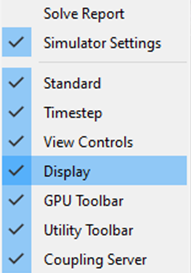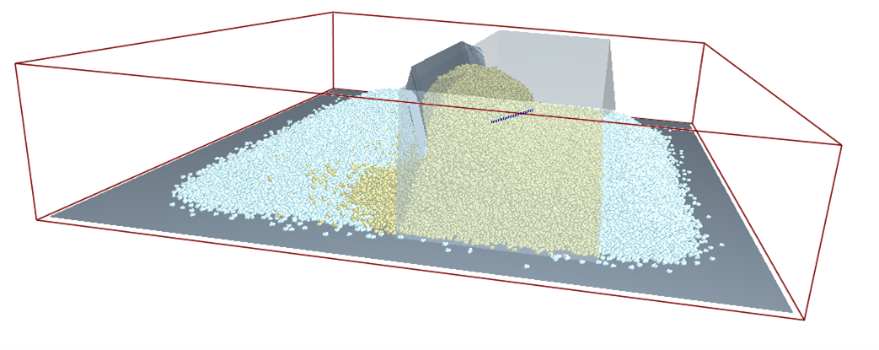EDEM Simulator - Run the Simulation
Once you have set up the model, learn how to run fast and efficient simulations using EDEM Simulator.
Click the  icon on the toolbar to open EDEM Simulator.
icon on the toolbar to open EDEM Simulator.
Set the Time and Grid options
The first step in running the simulation is to set the Time Step. The Time Step is the amount of time between iterations (calculations).
- In this simulation, ensure that the Auto Time Step checkbox is not selected.
-
Set the Rayleigh Percentage to
20%.
Note: This value is the percentage of the Rayleigh Time Step to be used, which corresponds to a Time Step of ~9e-05 s.
-
Set the simulation time and data write-out frequency.
The simulation time is the amount of real time your simulation represents.
- In the Simulation Time section, set the Total Time to 3 s.
- Set the Target Save Interval to 0.15 s to specify the write-out frequency which corresponds to the data being written approximately every 63 Time Steps.
- Set the Simulator Grid Cell Size to 3 Rmin.
- In the CPU Solver, select the number of CPU cores
from the Number of CPU Cores dropdown list.Note: Optionally, you can select CUDA GPU from the Selected Engine dropdown list.
Run the Simulation
The last step is to run the simulation.
-
Click the Start Progress
 icon in the Simulation window.
icon in the Simulation window.
-
Right-click Simulator Settings and then select
Display as follows:

-
Click the
 icon to view the particles which are frozen outside
the Dynamic Domain.
icon to view the particles which are frozen outside
the Dynamic Domain.
-
In the Viewer Controls, click the Refresh Viewer
 icon or the enable Auto Update
icon or the enable Auto Update  icon at any point to update the Viewer to view the progress of the simulation.
Note: Any particles that are frozen are removed from the contact calculation, therefore, improving the simulation performance. In this case, since the simulation is small compared to a full size simulation, the time saving may be lower due to only a small portion of the domain being frozen.
icon at any point to update the Viewer to view the progress of the simulation.
Note: Any particles that are frozen are removed from the contact calculation, therefore, improving the simulation performance. In this case, since the simulation is small compared to a full size simulation, the time saving may be lower due to only a small portion of the domain being frozen.